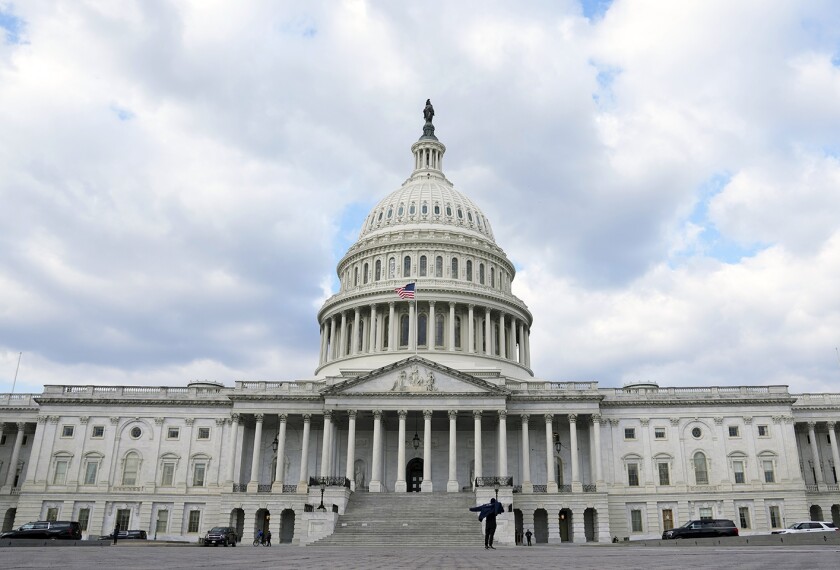Maryland Gov. Martin O’Malley, in his first State of the State address, outlined to lawmakers an ambitious agenda for public education that includes a nearly $1 billion increase for schools and school construction, as well as a freeze in college tuition for in-state students.
But unlike the Republican incumbent he defeated, former Gov. Robert L. Ehrlich Jr.—who in his 2003 freshman speech called for the creation of charter schools and for slot machines to pay for education—the newly inaugurated Democrat was quiet on new initiatives.
The lack of initiatives in Gov. O’Malley’s address last week was attributed by some to a $400 million budget shortfall for fiscal 2008 and to his difficult relationship with state schools Superintendent Nancy S. Grasmick.
The governor “doesn’t necessarily have access to initiatives, because he’s working with a superintendent who has her own ideas” on education, said Diana Saquella, the director of government relations for the Maryland State Teachers Association.
Addressing lawmakers from both houses of the Maryland legislature, Gov. O’Malley pledged an increase of $580 million for public schools, mandated by the Bridge to Excellence state law. He also promised $400 million in new school construction funds.
“I ask that, together, we start to get our children out of the temporary learning shacks that have been popping up behind every school in our state,” Gov. O’Malley told the Democratic-majority legislature.
He also proposed $192 million more in funding for higher education, including an 18 percent increase in state aid for community colleges, and called for a freeze on any further increase in tuition this year for in-state students.
“This will give families some relief. …Working families must be able to send their children to Maryland colleges,” Gov. O’Malley said in the Jan. 31 speech.
Read a complete transcript of Gov. Martin O’Malley’s 2007 State of the State address. Posted by Maryland’s Office of the Governor.
But Republican lawmakers lashed out at what they said was the governor’s irresponsible spending strategy. Mr. O’Malley will borrow $1 billion out of the state’s “rainy-day fund” to balance his $30 billion budget, including the education spending.“This kind of fiscal irresponsibility will land us in trouble,” said Sen. Andrew Harris, a member of the Senate education committee.
Democrats, meanwhile, have criticized the new governor for backing away from an election promise.
In campaign speeches, the then-mayor of Baltimore had promised to fully fund a component in the Bridge to Excellence Act, called the geographic cost of education index, which gives additional funding to school districts where the cost of providing education is higher. Gov. Ehrlich never funded the geographic index, which is not mandated under law, citing deep budget shortfalls.
But Gov. O’Malley, in his budget released in January, also chose to hold back $95 million in funding for the geographic index. He tried to take the sting out of his decision by proposing a bill that would make the funding mandatory starting fiscal 2009.
Rick Abbruzzese, a spokesman for Gov. O’Malley, said the governor’s hands were tied by the budget shortfall, which he inherited. He added that in addition to increased school funding, the governor’s budget proposal earmarks $78 million in increased funding for teacher pensions.
Sour Relations
One of the major challenges Gov. O’Malley now faces is smoothing over his rocky relationship with Ms. Grasmick, one of the nation’s longest-serving state education chiefs. She has led the Maryland Department of Education since 1991.
The two fell out during an attempted state takeover of four low-performing Baltimore city schools, which was engineered by Ms. Grasmick last year, during the administration of then-Mayor O’Malley. That move—the first attempted state takeover under the provisions of the federal No Child Left Behind Act—was seen as political because the mayor already had announced he would run for governor. The legislature blocked the takeover attempt. (“State Steps in Under NCLB in Baltimore,” April 5, 2006.)
Ms. Grasmick, though a Democrat, was seen as being politically close to Gov. Ehrlich, whom she supported on both his charter school initiative and on his controversial attempt to install slot machines to help pay for education.
Since the November election, Gov. O’Malley and Ms. Grasmick have not yet met to discuss their education agendas. The governor has made it clear that he would also like to replace Ms. Grasmick, whose contract runs out in June 2008.
That could be easier said than done. The governor has no direct power to remove the superintendent, who was appointed by the 12-member state school board. He will not be able to get a majority of his appointees on the board before her contract comes up for renewal, and she could seek and get another four-year term.
Sen. Harris criticized the governor for “picking a fight” with the superintendent because of their rocky history. “It is stunning that the governor’s going to play politics with schoolchildren and their success or failure,” he said.
Ms. Grasmick, meanwhile, is holding out an olive branch.
She attended the governor’s State of the State address, and later William W. Reinhard, a spokesman for Ms. Grasmick, said she was “delighted” with the governor’s budget. The two reportedly also shook hands at a Statehouse event last month.
“It’s the largest increase in public education funding in Maryland history,” Mr. Reinhard said about Gov. O’Malley’s proposed budget, adding that “this is all good news.”




